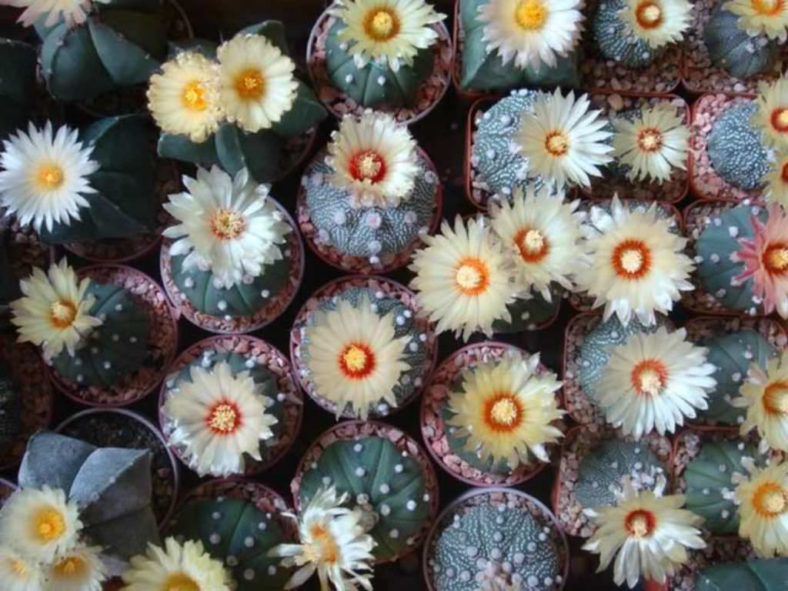Astrophytum is a genus of four North American cacti. They are all found in Mexico, and some also in the United States. Known for their beauty, these are quite popular among cacti collectors for their flowers, which are usually yellow or white. Astrophytums usually grow as solitary stems. Some species will become short columnar later in life if properly maintained. Some also have distinctive white flecks on their bodies.
Many of these cacti are prized: for example, Astrophytum asterias is hugely valued by the Japanese, especially the 'Super Kabuto' strain. However, they are difficult to cultivate and are often grafted onto an Echinopsis for best results. Most gardeners would be better off sticking with Astrophytum ornatum or Astrophytum myriostigma, both highly rated. Astrophytums are ribbed and covered in areoles from which sharp spines protrude. The spines can be black or golden. These cacti are usually slow-growing, and though mature specimens are quite impressive, it can take years to nurture Astrophytum to that level. However, their free-growing flowers, which stick up from the apex, are lovely. These are among the more pleasant species of North American cacti if properly grown.
Growing Conditions
Light: Very sunny conditions, with hours of direct sunlight every day.
Water: Astrophytums like dry conditions with sporadic watering in the summer and then a dry winter. During the growing season, water infrequently.
Temperature: They like hot temperatures above 70 ˚F (21 ˚C) during the summer and prefer cooler, more temperate winters.
Soil: Typical cactus potting mix should be fine, ideally containing some loam or peat.
Fertilizer: Fertilize with a balanced, diluted fertilizer, like 20-20-20, mixed into their water during the growing season.

Propagation
They propagate by seed, and their seeds are fairly fragile; be gentle with them before planting. They also have a relatively short shelf life and must be sown quickly after harvesting to have a reasonable rooting chance. When sowing them, ensure they are in well-aerated soil, then seal the newly planted seeds to help catch moisture and heat. It can help to soak seeds before they are sown.
Repotting
Repot regularly to help them develop. Astrophytums should be repotted at the beginning of the growing season for best results, allowing them to grow into the impressive specimens for which the genus is known. Due to their stiff spikes, protect your hands before repotting. Lift the plant out at once, then replace it in a larger pot and backfill it with soil. Do not overwater or overfeed newly repotted cacti, as disturbances can be hard on them.
Grower's Tips
Astrophytums are not vigorous plants, and they require a lot of patience to reach their full potential. Keep regularly watering, feed them during the growing season, and repot annually to give them space to develop. They need a temperate, dry winter. Ensure not to overwater them to avoid rotting their roots. They will develop marvelous flowers if given sufficient care once they reach maturity. Watch out for common cactus pests like aphids and scales as well. These can often be taken care of by a good eco-friendly pesticide or wiped away with a cloth.
Source: about.com
Links
- Back to genus Astrophytum
- Succupedia: Browse succulents by Scientific Name, Common Name, Genus, Family, USDA Hardiness Zone, Origin, or cacti by Genus